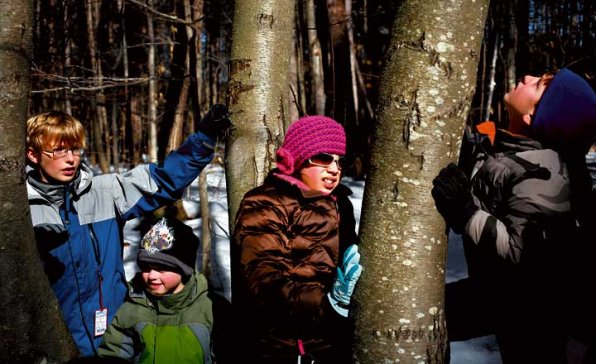Have you ever wondered where Silk Farm Road got its name? You probably know this road best as being home to the New Hampshire Audubon’s McLane Center. It stretches from Dunbarton Road to the Bow line, where it turns into Albin Road. It boasts a few state forests, Turkey Pond and plenty of trails. By all accounts, it should be called “State Forest Road” or “Wildlife Way.” Or maybe even “Turkey Pot Pie Lane.” (Hello, Blake’s Turkey Farm!) But Silk Farm? What’s that all about?
Actually, it’s just what the name implies. In June of 1835, a group of men – Isaac Hill, Albe Cady, G. Parker Lyon, Stephen Brown, Moses Atwood, Samuel Evans, Charles Smart and John Whipple – came up with $25,000 to develop a silk manufacturing farm. The property they purchased was owned by Ballard Haseltine. He inherited the land and homestead from his father, Joseph, when he died in 1798. Ballard’s mother, Elizabeth Abbot, lived at the property until her death in 1834. That’s when Ballard sold the property to the enterprising men.
According to James Lyford’s history of Concord, published in 1903, “The feasibility of silk culture in New Hampshire had for some years considerably engaged the attention of thoughtful minds, and tests thereof on a limited scale had been made.” Lyford adds that the men planned to “experiment under more favorable conditions.” So, they planted several hundred mulberry trees, the leaves of which provide food for silk worms, and manufactured silk in small amounts for a few years.
The men didn’t come up with the idea of manufacturing silk on their own. According to “A Gallant Silken Trade,” written by Alice Morse Earle and published in The New England magazine in 1900, the idea was introduced in the early 1600s by King James I as a replacement for growing tobacco. While silk manufacturing never really took off in the United States, there were pockets of success here and there over the next 200 years, enough to encourage manuals and even dedicated newspapers on producing silk. According to the article, “This was . . . the disappointment and ruin of New England clergymen, lawyers, doctors and farmers by the hundreds A trail of books . . . has been left by the silkworm enthusiasts and speculators and pamphlets on mulberry planting; newspapers also called ‘The Silk Worm,’ ‘The Silk Manual,’ ‘The Silk Culturist,’ all of which . . . must at their appearance have but ill prepared thrifty New Englanders for their sudden and annihilating losses. In every town and village the bright light of speculation and profit had shone; in every town was the accompanying and gloomy shadow of failure.”
As Earle points out, New Englanders were hurt slightly less by the silk trade craze because the speculation was more limited. She writes, “An old farmer said nearly forty years later, ‘We don’t know many furrin tongues here in this town, but there’s one Latin name we ain’t a-goin to forget; you can’t say morus multicaulis [mulberry tree] now in the store or in town meeting ’thout makin’ every middle aged man in the room madder’n thunder thinkin’ what a fool he was.’ ”
Evidently the Concord men who intended to study silk farming came to the same conclusion – it just wasn’t all it was cracked up to be. Still, their work is remembered in the name of the street they planted those mulberry trees on, and that should count for something.
Thanks to Sandi Lee at the Concord Public Library for directing us to the Concord histories by Nathaniel Bouton, James Lyford and Grace Amsden. Read them on the library’s website, concordpubliclibrary.net. Thanks also to Jim Milliken for tipping us off on the silk worms.










